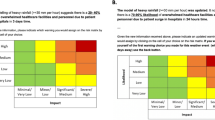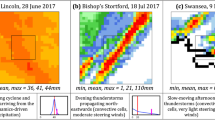Abstract
MANY economic applications of meteorology depend upon the use of forecasts in deciding whether or not to incur expense by taking precautions against some particular phenomenon which would cause damage. A good example is provided by forecasts of ground temperature in deciding whether to pay men to spread sacking over newly-laid concrete road surfaces which would be injured by frost. In the simplest form of such problems the three possible lines of action are (1) to take precautions only on occasions when the phenomenon is forecasted, (2) to take precautions on all occasions, (3) to take no precautions at all. It is of interest to examine the circumstances under which (1) is the most economical line of action.
This is a preview of subscription content, access via your institution
Access options
Subscribe to this journal
Receive 51 print issues and online access
$199.00 per year
only $3.90 per issue
Buy this article
- Purchase on SpringerLink
- Instant access to full article PDF
Prices may be subject to local taxes which are calculated during checkout
Similar content being viewed by others
Rights and permissions
About this article
Cite this article
BILHAM, E. A Problem in Economics. Nature 109, 341–342 (1922). https://doi.org/10.1038/109341c0
Issue date:
DOI: https://doi.org/10.1038/109341c0



